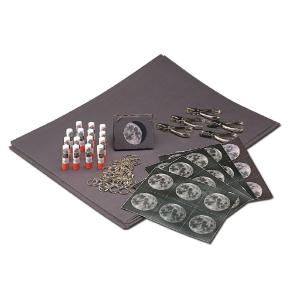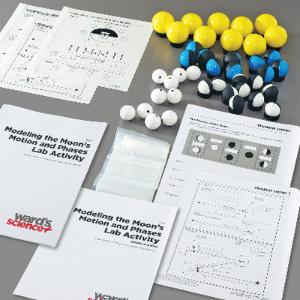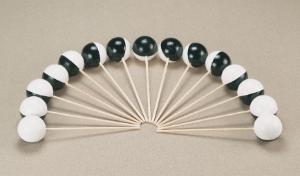Looks Like a Moon, Tastes Like a Cookie; A Moon Phase Activity
Elementary/Middle school
Once in a blue moon, an astronomy activity comes along that's both educational and tasty!
While some people may think the Moon is made of cheese, we think using Oreo sandwich cookies makes studying space science even sweeter!
In this simple activity, all it takes is a package of your favorite stuffed cookies and a few household supplies to study phases of the moon and explore astronomy and physics concepts including gravitation and relativity, light, and spectra. By including the Moon as part of your astronomy lessons, you can harness your students' curiosity, imagination, and create a sense of shared exploration and discovery.
But first, a bit about the Moon…
The Moon is our closest neighbor. It's a beautiful, changing, natural satellite that helps us better understand the Earth's past and future.
The Moon goes through 8 major phases approximately every 29.5 days. Talk about a busy month!
These 8 phases are:
- A new moon is when the Moon cannot be seen because we are looking at the unlit half of the Moon. The new moon phase occurs when the Moon is directly between the Earth and the Sun. A solar eclipse can only happen at new moon. To have a successful eclipse watch party make sure you planet!
- A waxing crescent moon is when the Moon looks like crescent and the crescent increases ("waxes") in size from one day to the next. This phase is usually only seen in the west.
- The first quarter moon (or a half moon) is when half of the lit portion of the Moon is visible after the waxing crescent phase. It comes a week after the new moon.
- A waxing gibbous moon occurs when more than half of the lit portion of the Moon can be seen, and the shape increases ("waxes") in size from one day to the next. The waxing gibbous phase occurs between the first quarter and full moon phases.
- A full moon is when we can see the entire lit portion of the Moon. The full moon phase occurs when the Moon is on the opposite side of the Earth from the Sun, called opposition. A lunar eclipse can only happen at a full moon. No wonder the Moon gets so full of itself that day!
- A waning gibbous moon occurs when more than half of the lit portion of the Moon can be seen, and the shape decreases ("wanes") in size from one day to the next. The waning gibbous phase occurs between the full moon and third quarter phases.
- The last quarter moon (or a half moon) is when half of the lit portion of the Moon is visible after the waning gibbous phase. What a great inspiration for the delicious half-moon cookie!
- A waning crescent moon is when the Moon looks like the crescent, and the crescent decreases ("wanes") in size from one day to the next.
The Moon has always been an object of curiosity for humans of all ages. Even though it is 238,900 miles away, it's the perfect astronomical body to study because of its dependability and proximity. Through this simple yet tasteful activity, your students will develop a deeper understanding of the moon.
We're not sure about you, but all this Moon talk is making us hungry. Time for a snack!
Recommended Products:
[StartProductBlock]

Constructing a Moon Phase Calendar Activity
Identify the Moon's phases 365 days a year using photo-realistic images of the Moon for photocopying. For Grades 5-10. Materials for 31 students.
[EndProductBlock]
[StartProductBlock]

Modeling the Moon's Motion and Phases Lab Activity
Students will use framework concepts of Earth's Place in the Universe (ESS1) to learn about the phases of the Moon, and the difference between a lunar (synodic) month and a sidereal month.
[EndProductBlock]
[StartProductBlock]

Moon Pops Activity
Miniature moons on a stick illustrate the phases of the moon and how the positions of the Earth, Sun, and Moon cause each phase.
[EndProductBlock]
